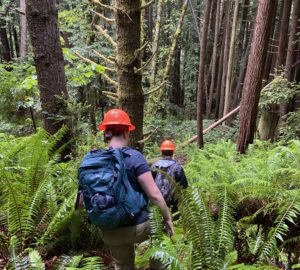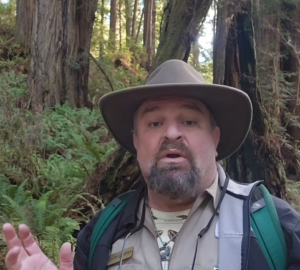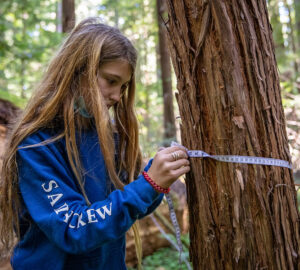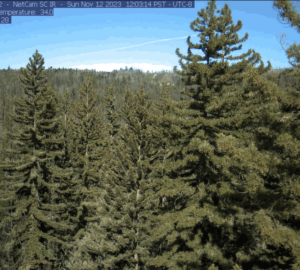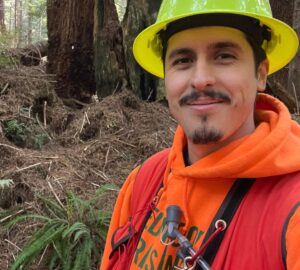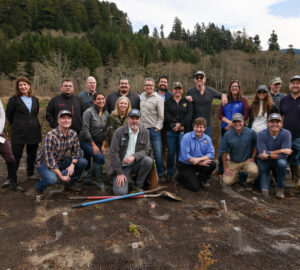Get to know a few of the women who are helping to restore young redwood forest ecosystems for future generations
In honor of Women’s History Month, we caught up with some of our Redwoods Rising partners from the National Park Service and California State Parks. These women are helping to secure the future of the young redwood forests within Redwood National and State Parks—and along with League staffers, they are making history in redwoods conservation. Keep scrolling to learn about these brilliant women and the inspiration behind their work.
Karin Grantham, Chief, Resource Management and Science, Redwood National Park
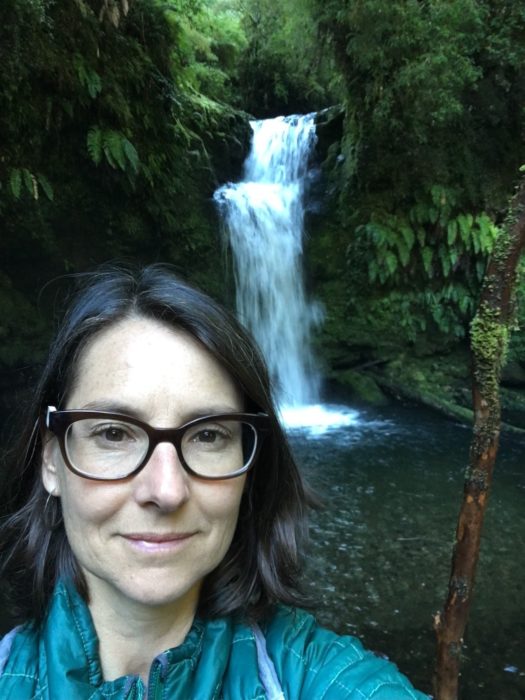
Did you have an aha moment that made you realize you wanted to work in conservation?
Yes, but it happened over about six weeks when I participated in an archeological field school on San Clemente Island, which is administered by the U.S. Navy. I remember the feeling of dread that I had as the airplane was coming in for a landing on that brown rock of an island. I wondered what I got myself into. As the weeks went on though, my attention was drawn to the amazing natural and cultural resources that the island was hiding. There were numerous restoration projects going on for endangered species (island fox and loggerhead shrikes) and vegetation management projects in addition to the archeological surveys and excavations we were conducting. It hooked me. What I learned was not to judge any landscape by first glance. When I returned to the mainland, I immediately sought out volunteering with the U.S. Forest Service near my home, which was the second small step in my journey of conservation.
What’s your favorite book?
My favorite of the past year has been We Are Dancing for You: Native Feminisms and the Revitalization of Women’s Coming-of-Age Ceremonies by Dr. Cutcha Risling Baldy. It’s an academic book but it’s embedded with a personal story. It holds no punches in disclosing damage done by colonization to gender equality in tribal communities, the perpetuation of misinformation collected by anthropologists and historians, and gendered violence. But the book also looks toward the future for what tribal communities are doing to bring these ceremonies back into practice as necessary to girls coming of age and cultural revitalization.
What song feels like the redwood forest?
“Alone in Kyoto” by Air.
What’s your dream for the future of conservation?
My daughter and I are reading “The Arabian Nights” right now, and whenever the genii come up in the book, we talk about what our three wishes would be. It’s probably similar to what any 10-year-old might wish for right now: for diseases to go away, to save the animals from human-caused climate change, and for unlimited wishes (LOL). But I think about that. What she’s really saying is we need to have healthy food, water, land, and air. And to have those things, we need to care for our planet. So, my hope for the future is to see current generations take more responsibility for the adverse changes we have caused, and take further and harder steps to reduce those effects by being proactive in protecting and restoring what we have left. We also need to recognize that natural resources are cultural resources and vice versa, and we need to step out of the way and trust that communities who have traditional ancestral knowledge for these resources to do what they know best how to do.
Vicki Ozaki, Geologist, Redwood National and State Parks
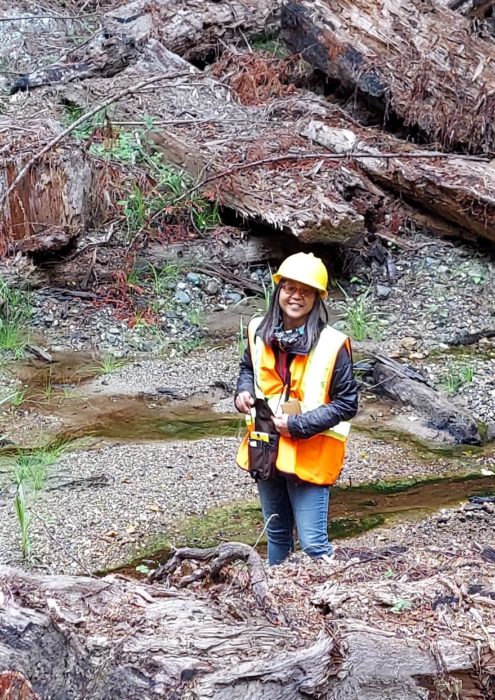
What’s the weirdest thing that’s ever happened on the job?
Decades of fieldwork have provided many amazing adventures. I remember swimming through a narrow deep bedrock canyon on the Middle Fork of the Eel River trying to count over 800 summer steelhead as they schooled in a tight circular pattern. I had never had an opportunity to swim with that many adult steelhead, let alone summer steelhead. Also, on our five-day hike/snorkel down the river, we measured the remnants of the 1964 flood deposits tens of feet high. It was amazing to know the rivers on the north coast still show the battle scars of being buried in sediment but are recovering from these past events.
While working in Prairie Creek, I watched a mother deer protect her fawn from a beautiful, healthy, and well-fed coyote. The three were locked in battle with the coyote circling in on the fawn and the mother screaming and putting her body between the coyote and her baby. We were fortunate to see this amazing scene unfold while we were measuring the depth of streambed scour from winter storms.
During my career, I have been fortunate to study, observe, and watch the recovery of Redwood Creek from legacy land use and large storm events. Over the period of decades, I got to know the character of the river intimately. Gravel bars I sat on in the 1980s while taking notes are now perched 20 feet in the air as the channel has downcut, finding a new channel bottom as old flood sediments are flushed out. Brings to mind the old adage, “You never see the same river twice.”
What song feels like the redwood forest?
Redwood forests bring to mind the fantastic soundscape, which maybe an oxymoron in the redwoods, of quiet. There are some places in the old-growth redwood forests where you can’t hear any human-made sound. Your ears search for sound. Other times, you can enjoy the sound of a light breeze in the trees or the squeak of the trees as they move.
Shaina Niehans, Secretary, Office of the Superintendent, Redwood National and State Parks
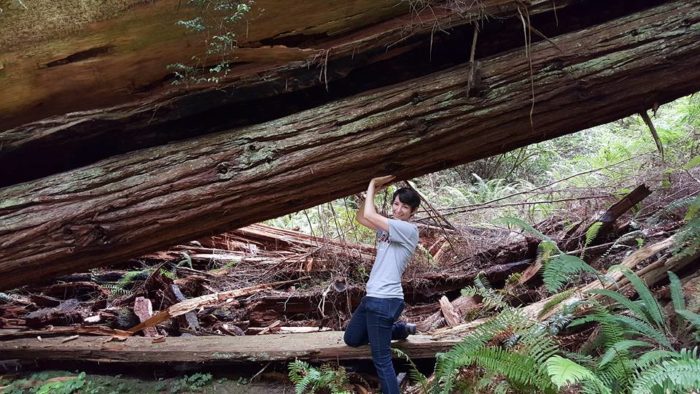
Did you have an aha moment that made you realize you wanted to work in conservation?
Ever since childhood, I knew I wanted to stay connected to the outdoors. I used to “advise” my father on which trees he could cut based on how many of that species were around. But, going through college, I was advised to take one “tourism” course called Natural History and knew then that my future was somewhere in that realm. I never would have guessed I’d end up on the career path that I am currently on, but the mission of the National Park Service really speaks to me, and I am thankful to be a part of it all.
What’s the weirdest/funniest thing that’s ever happened on the job?
I used to work in interpretation, and while starting a ranger-led tour, I had to chase a bear off the Lady Bird Johnson Grove bridge. And then I had to keep 40 visitors away from the bear. Definitely a hard-to-top moment on that guided tour!
What’s your favorite book?
A Sand County Almanac by Aldo Leopold. The quote, “One of the penalties of an ecological education is that one lives alone in a world of wounds,” has haunted me for a long time.
Shannon Dempsey, Engineering Geologist, North Coast Redwoods District, California State Parks
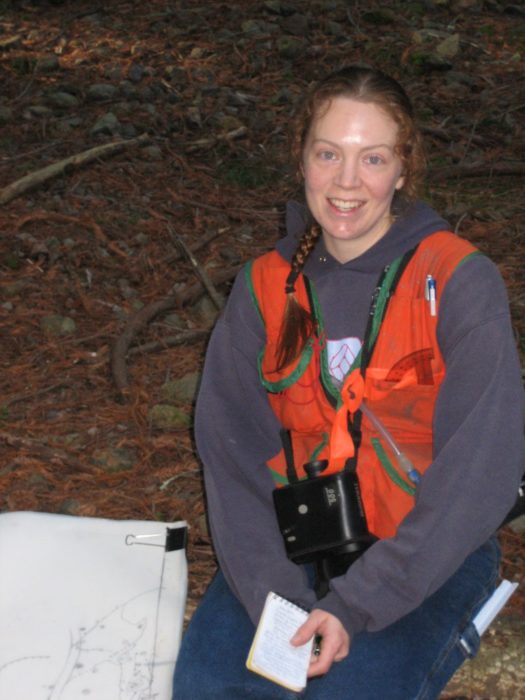
Did you have an aha moment that made you realize you wanted to work in conservation?
I grew up camping every 4th of July at Jedediah Smith Redwoods State Park. I knew at a young age I wanted to work in parks and the redwoods, specifically. That’s the main reason I chose to go to college at Humboldt State University and pursue an education in natural resource management. To this day, I can’t believe I get to work to help restore the very same watershed that I grew up camping in!
What’s your favorite book?
Ishmael by Daniel Quinn.
What song feels like the redwood forest?
“Anthem” by Emancipator.
What’s your dream for the future of conservation?
My personal dream is to be able to revisit project areas I have worked on in the past and be amazed by the transformation of nature that has taken place over my lifetime. My dream for others is to be a part of the collective work that brings about a more resilient and healthy future for all ecosystems on this planet, so that people can experience more opportunities to connect to the Great Spirit and interconnectedness of life.
Sarah Belcher, Redwoods Rising Implementation Coordinator and Landscape Architect, Redwood National and State Parks
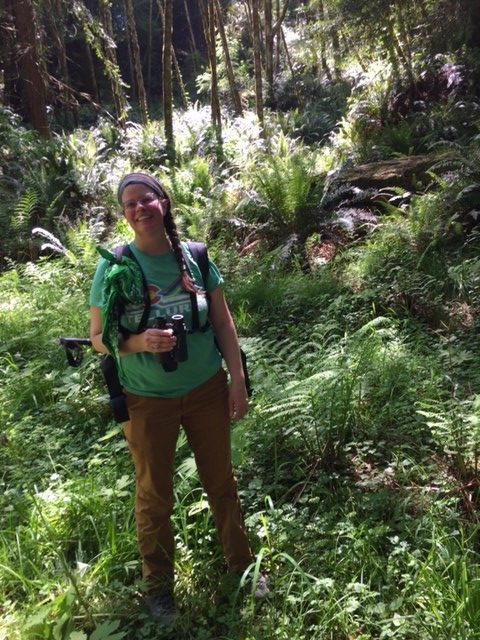
Did you have an aha moment that made you realize you wanted to work in conservation?
A series of events have led to my career development. Notably, the summer before my senior year in high school, I was fortunate to spend a month backpacking in Yellowstone with National Outdoor Leadership School on a wilderness natural history expedition. This experience opened my eyes to the complexities and value of public land management. My first federal job was as a landscape architect intern with Blue Ridge Parkway while in graduate school. That job introduced me to the many roles for landscape architects in federal land management and influenced my path forward. I’m relatively new to Redwoods Rising and proud to be a part of the legacy unfolding with this landscape-scale restoration project.
Who’s your conservation hero?
Two conservation “sheroes” come to mind: Jane Goodall and Greta Thunberg. They are both remarkable women who inspire people of all ages and walks of life to be active participants in the global conservation movement. Both are conduits for youth empowerment with steadfast convictions that will continue to influence future leaders for generations.
What song feels like the redwood forest?
In keeping with women’s month, “Green Magic” by Edie Brickell & New Bohemians comes to mind.
What’s your dream for the future of conservation?
In the age of the nature deficit disorder, conservation of open space and access to public lands remain paramount to healthy existence. My dream for future conservation is a world where people have an understanding, an appreciation, and a connection to the ecological processes happening around them. With this understanding, ecological function is prioritized as a social norm feeding a healthy planet, healthy people, and a healthy economy.
Marisa Parish, Environmental Scientist and Aquatic Program Lead, North Coast Redwoods District, California State Parks
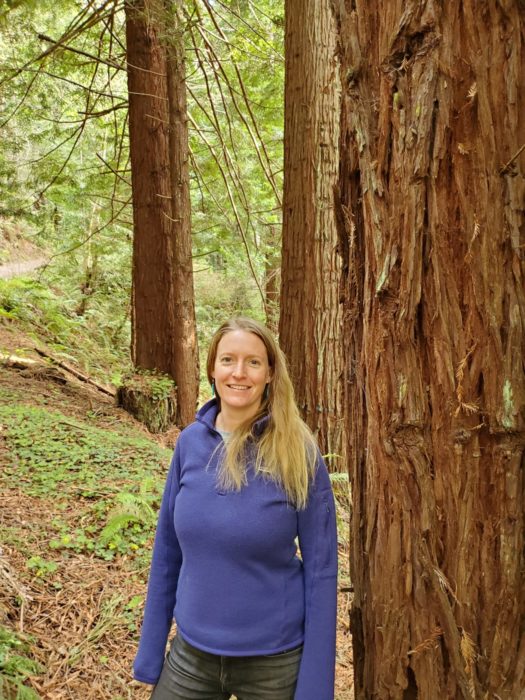
Did you have an aha moment that made you realize you wanted to work in conservation?
Really there was no one moment that led me in my desire to contribute to restoration and conservation. I grew up camping and enjoying the outdoors with my family. These early experiences were the foundation of my connection to nature. As I began to navigate my path toward choosing a career, biology was the natural fit. During years of working in the field, my interest in studying biology and wildlife grew into my passion for restoring and conserving ecosystem processes.
What’s the weirdest/funniest thing that’s ever happened on the job?
Working in the field provides daily opportunities for beautiful and inspiring observations. Occasionally we are lucky enough to see wildlife caught off guard and, as a result, respond in a funny manner. During a snorkel survey my field partner and I surprised a beaver. Its response was to flee and hide. However, its hiding spot only covered its head, not the rear end, tail, or hind feet. Similar to a small child, it seemed that the beaver believed if it couldn’t see us, we must not be able to see it. We were able to get great views of the intricate design of the tail and amazing webbed feet before we moved on with our survey.
What’s your dream for the future of conservation?
I dream that all people will see the value of nature, not to simply serve humans, but as its own inherent right to thrive. Our decisions for development and infrastructure upgrades will account for the needs of the ecosystem as a whole so that all species and natural processes have the space and resources necessary to flourish.
Michelle Forys, Environmental Scientist, North Coast Redwoods District, California State Parks
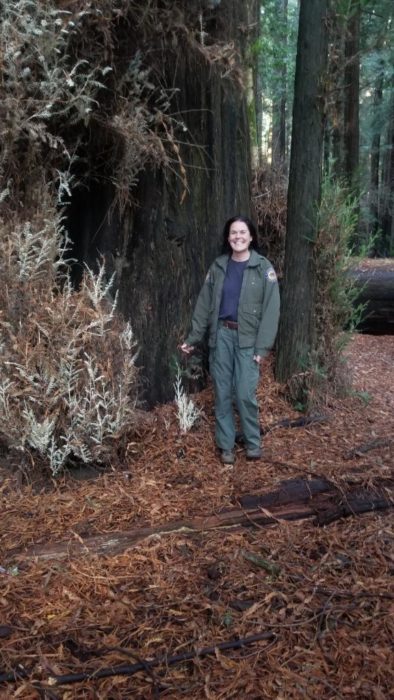
What’s the weirdest thing that’s ever happened on the job?
In 2003, lightning sparked a wildfire in the old-growth redwood forest in Humboldt Redwoods State Park. At the time, I was on the North Coast Redwoods District burn team. The burn team was able to install multiple fuel and vegetation monitoring plots in front of the fire line before it burned through to the South Fork of the Eel River. This fire was unlike the recent redwood forest fires California has experienced. Being in an old-growth redwood forest and with decent weather conditions and no recent droughts, the fire was slow moving and of low intensity for the most part. The day I helped with installing the monitoring plots, the fire crept along the forest floor at a rate of 1 foot every 11 minutes. At times I could straddle the fire line as flame heights were generally less than 1 foot tall. Within a day or two the fire burned through the monitoring plots, which is what we hoped for. Rarely does anyone get to experience a low-intensity old-growth redwood forest fire started by lightning. It was a unique and special experience for me and something that will probably never happen again, especially with increasing climate change.
What’s your dream for the future of conservation?
My dream for the future of conservation is that the world embraces that climate change is real and that a major increase in the protection and restoration of natural resources begins before the destruction and pollution occurring is beyond reversing. This is a very big dream and will take an enormous amount of work and cooperation across the world. So, my hope for the future of California is that more people become inspired to be conservationists, natural resource managers, and educators to help continue the work that past and current managers have been able to accomplish thus far.


